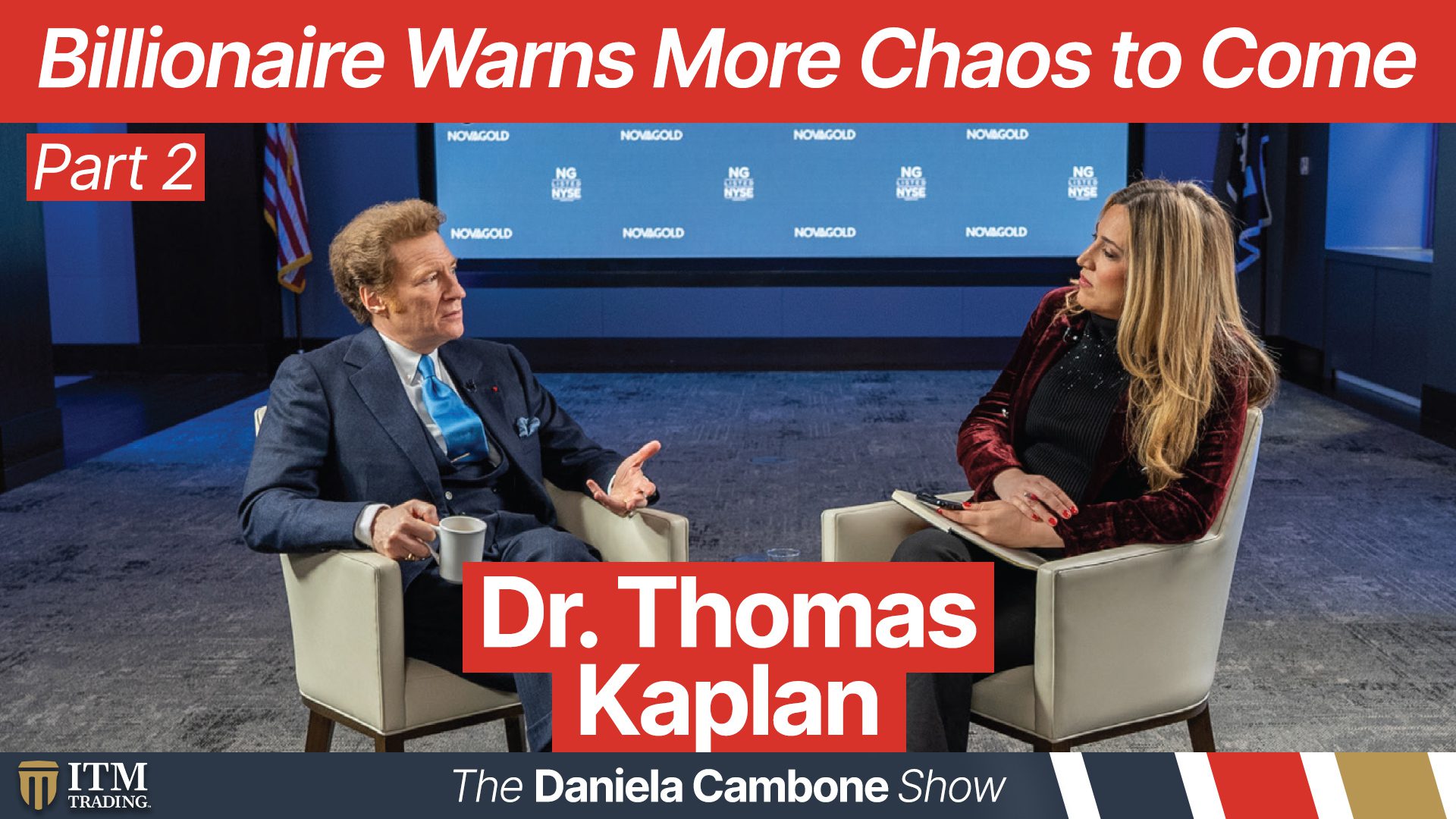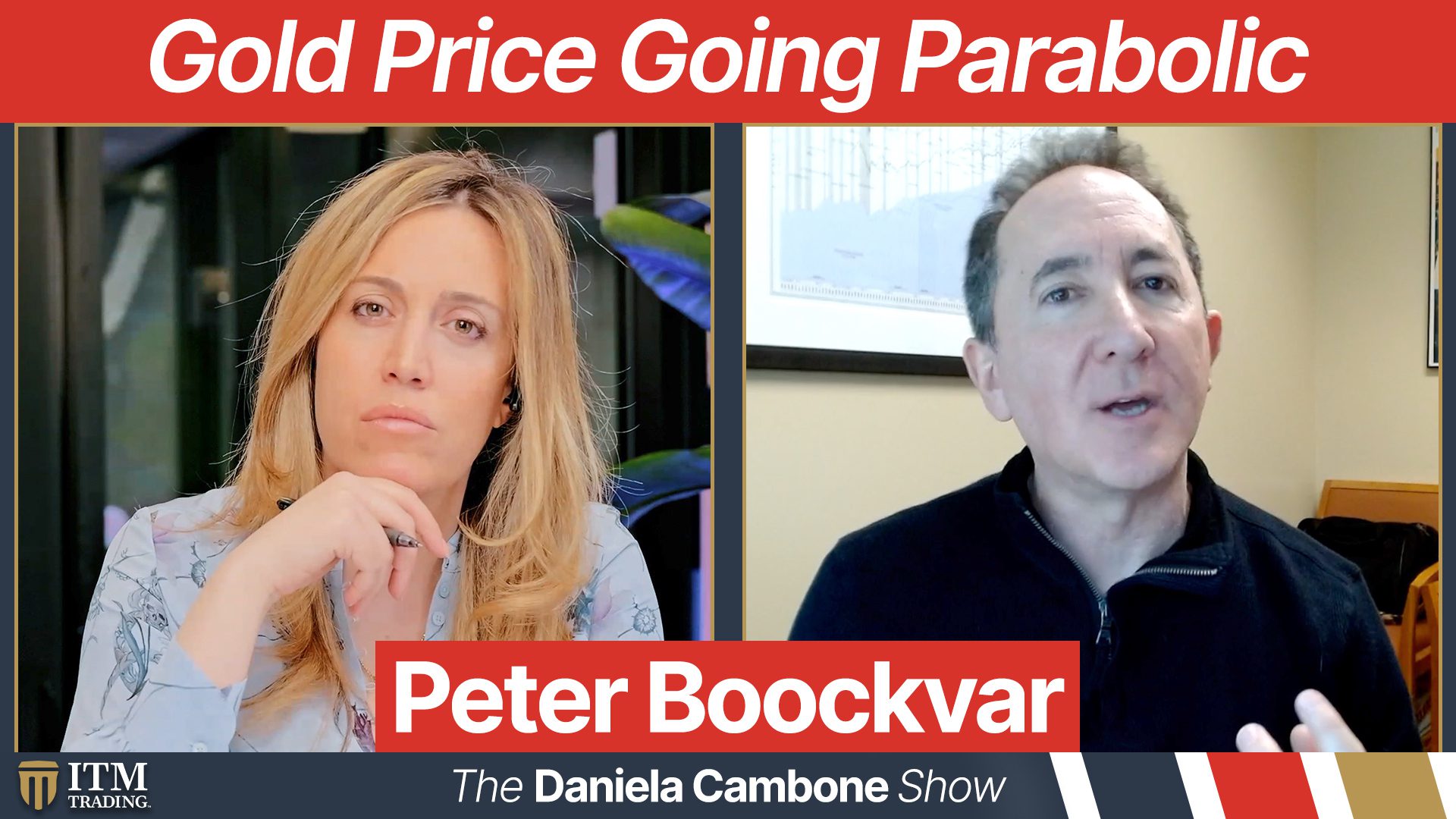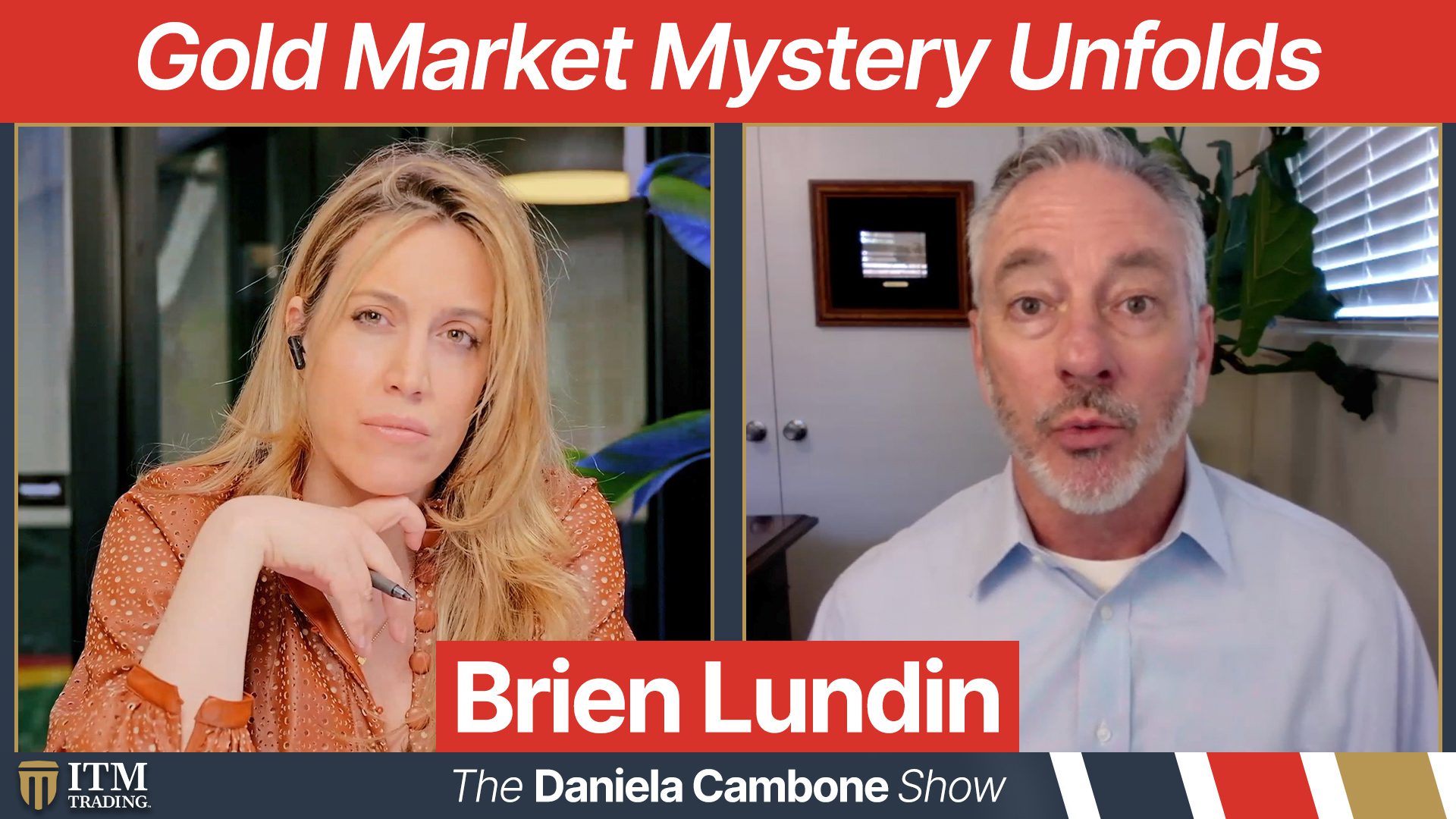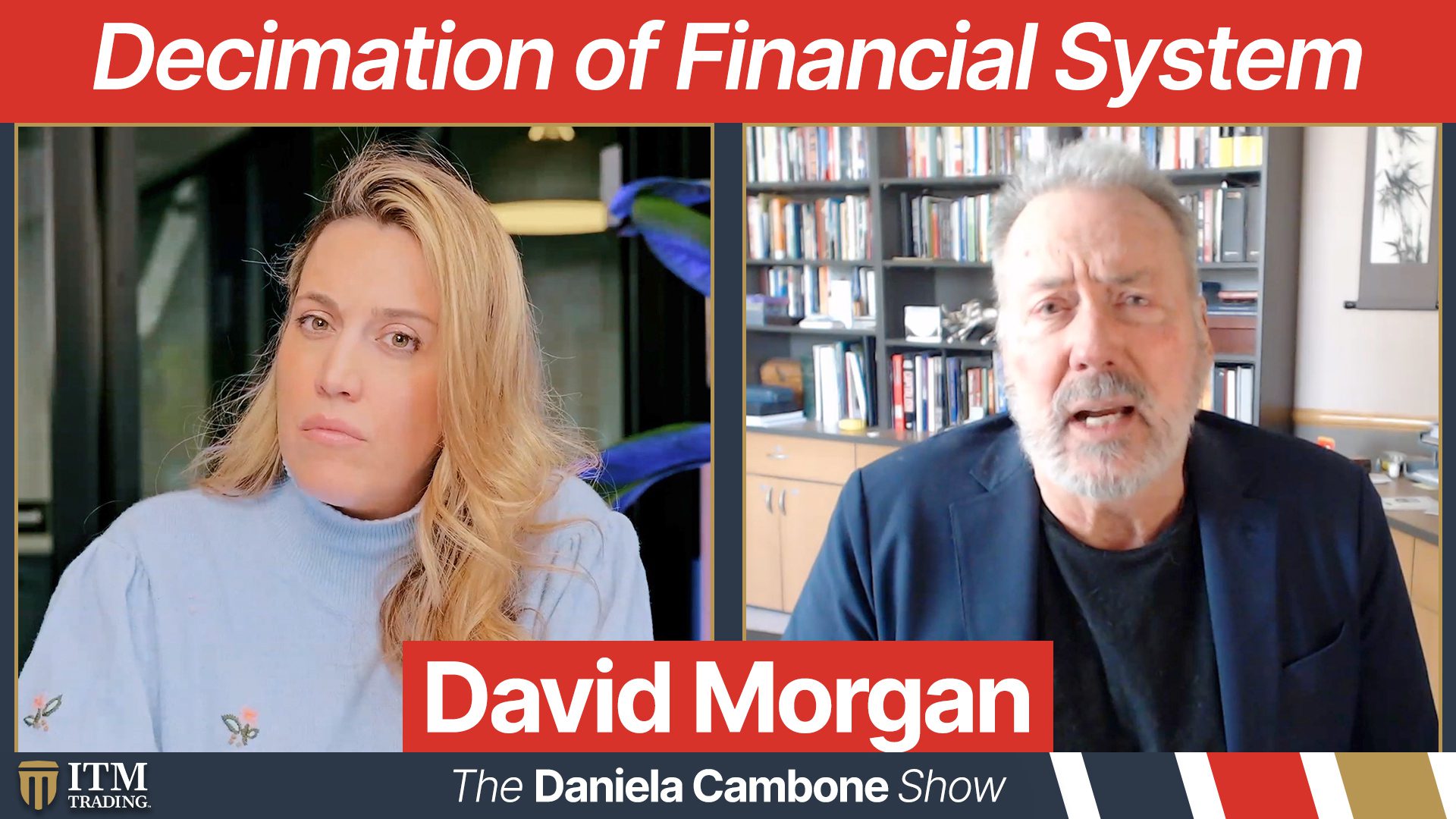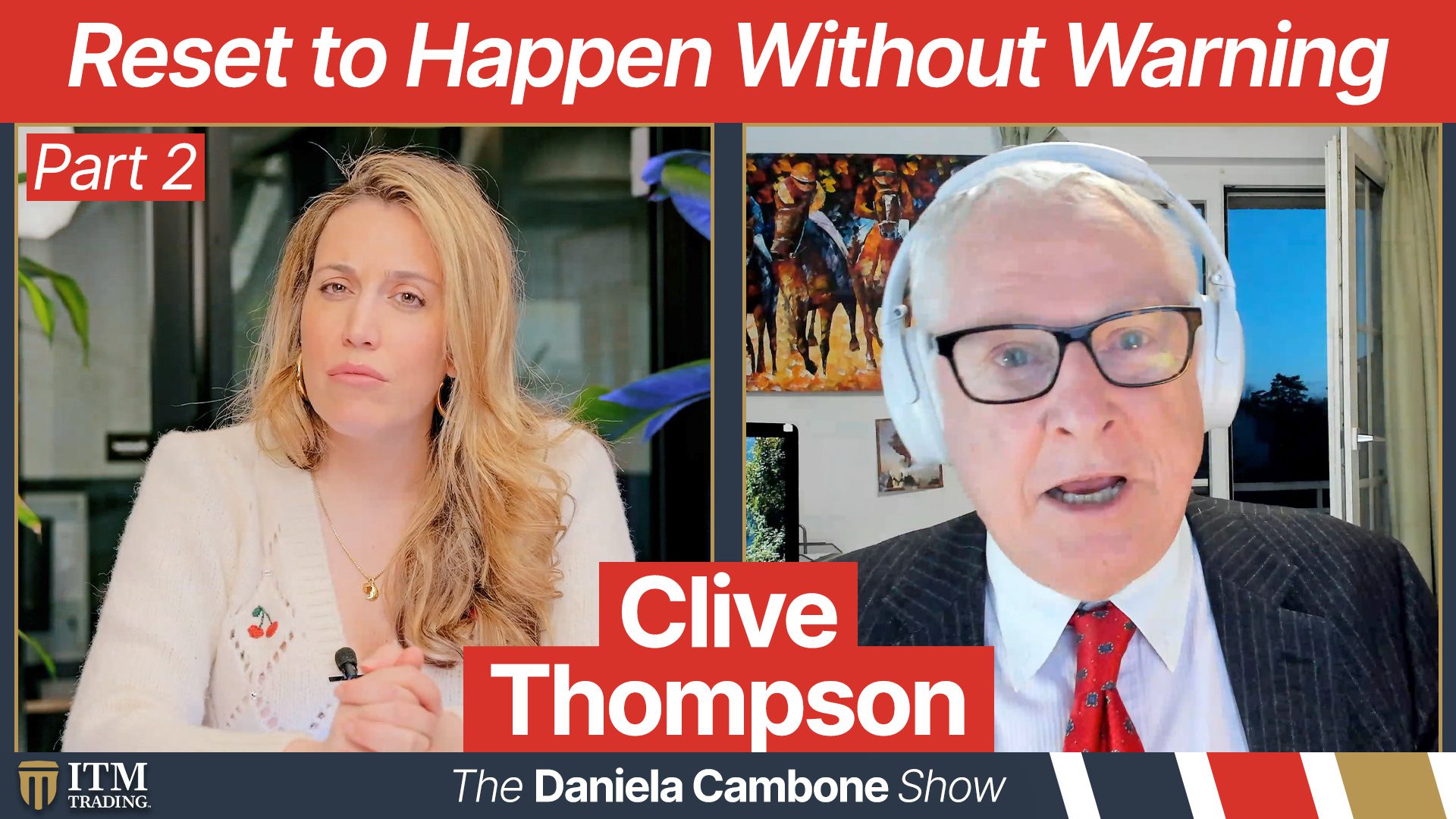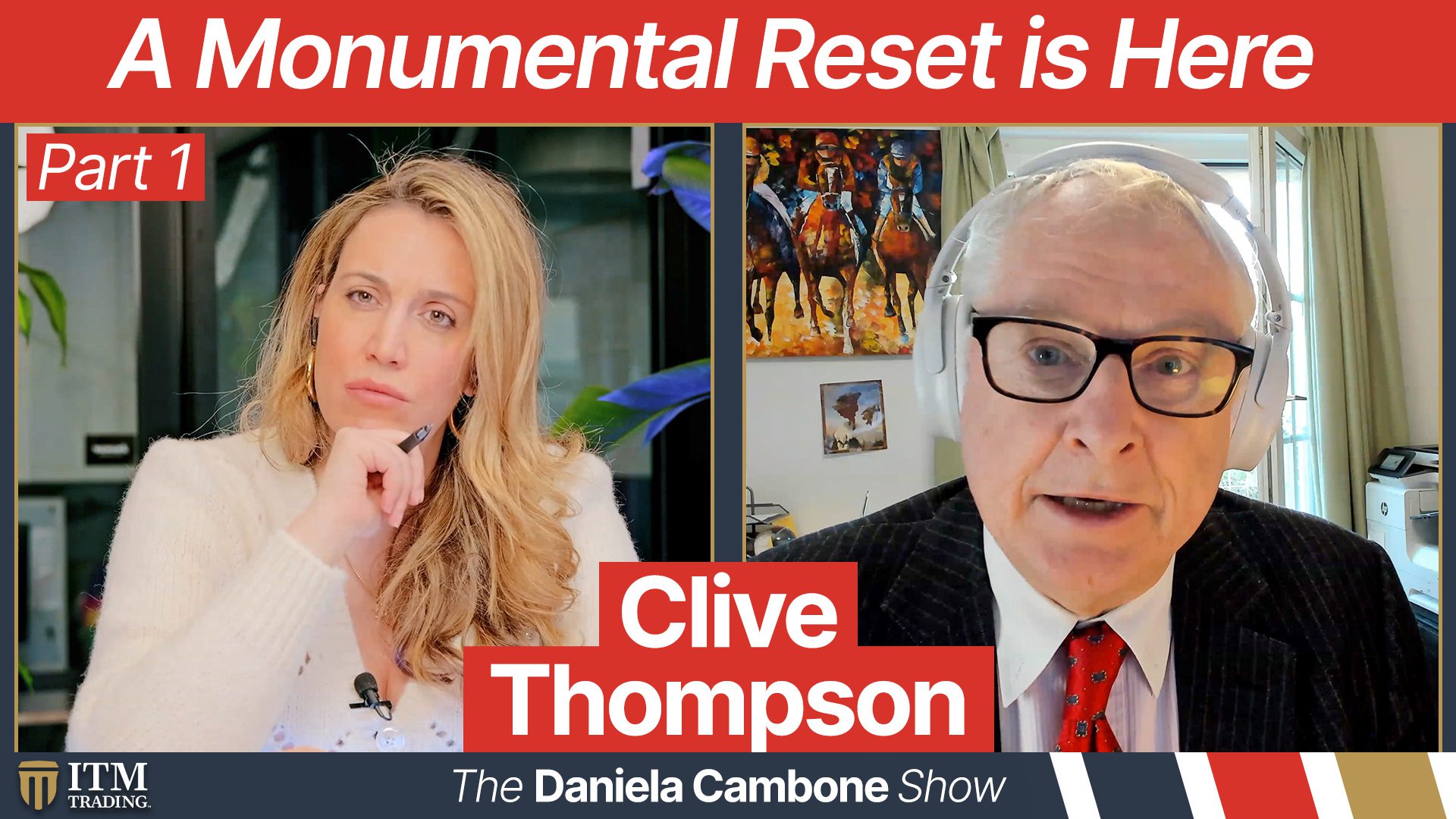These 5 Flashpoints Could Cause “Exponential” Volatility on Economy Warns Wall Street Expert
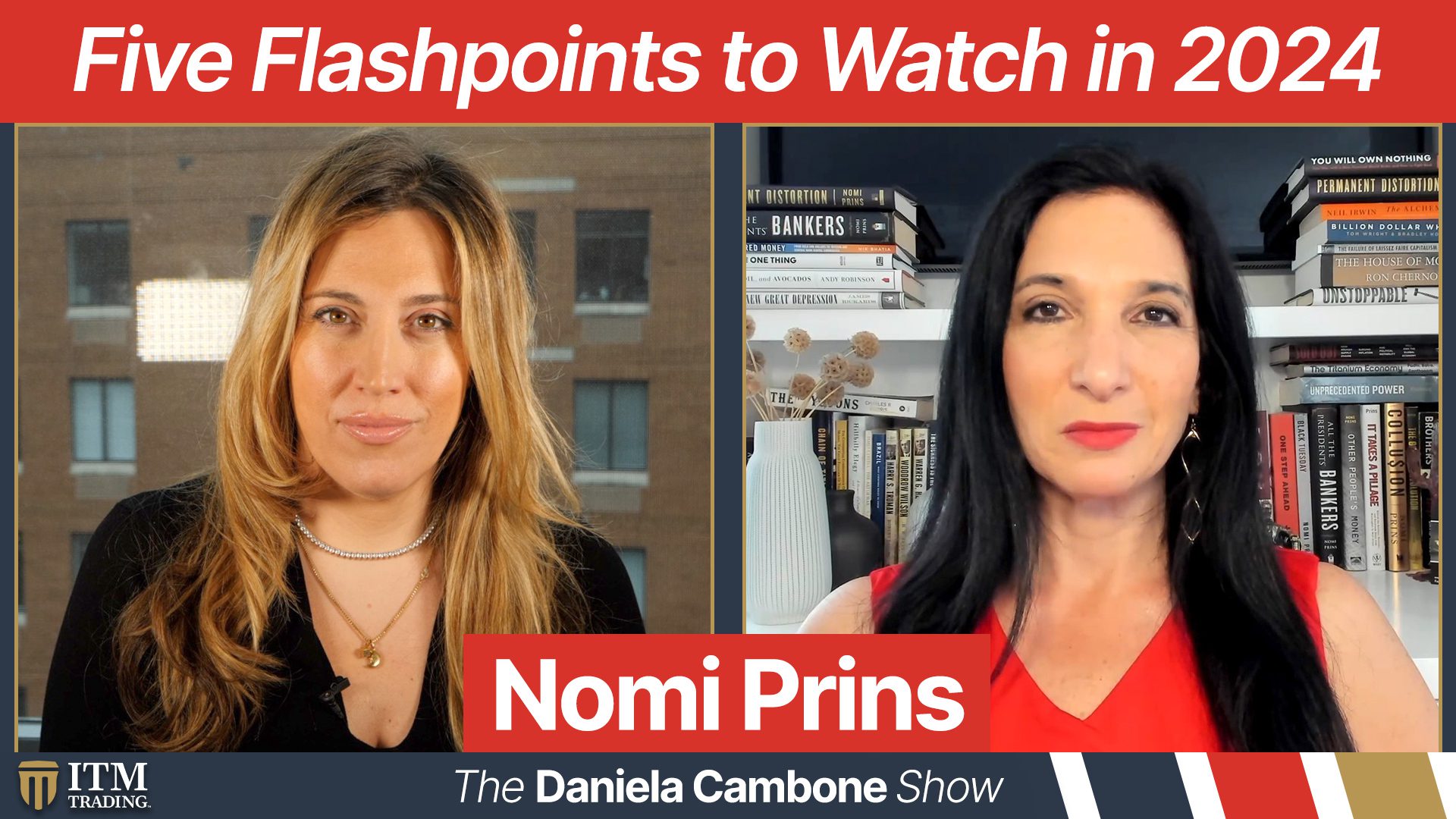
Today’s economy is ‘actually like a sort of veil of health covering this potential rock,’ warns Nomi Prins, geopolitical finance expert, and bestselling author. In a recent interview with Daniela Cambone, she highlights that as layoffs continue to spike across many sectors, it’s becoming increasingly challenging for people to make ends meet, resulting in mounting credit card debt. Additionally, she elaborates on the five flashpoints to watch in 2024, encompassing the troubled banking sector, escalating geopolitical conflicts, supply chain disruptions in energy and food products, the AI industry, and the role of the Federal Reserve in the election year. Watch the video to get a deep dive into the five areas and learn how you can prepare.
CHAPTERS:
00:00 Jerome Powell QT
3:56 QE
5:06 U.S. economy
6:38 US. Debt
8:21 Job prospects
9:15 5 flash points
13:44 U.S. election and the Fed
TRANSCRIPT FROM VIDEO:
daniela (00:01.828)
Hi, this is Daniela Cambone. Welcome back to the Daniela Cambone show here on ITM Trading. Well, today we are catching up with Nomi Prince. She is the bestselling author of Permanent Distortion and Collusion, How Central Bankers Rig the World. Perfect guest ahead of the much anticipated Federal Reserve meeting today. Nomi, so good to be with you.
Nomi Prins (00:26.038)
Thank you so much, Daniella. What exciting times we have in the year that we have ahead.
daniela (00:30.78)
Well, yes, and I want to get to that point because I know that you have five important points to watch for 2024. You say that this is a different year, a peculiar year, and we’re probably going to get to why you think that. But first, your thoughts on Jerome Powell and the Federal Reserve. Is QT over Nomi? And is it time to start the timer for quantitative easing?
Nomi Prins (01:02.314)
Yes. Now here’s the thing. I do not expect the Fed to cut rates at this first meeting out the gate. I don’t actually expect them to cut rates until the second half of the year because though we’ve seen some abatement in inflation, I don’t think that Jerome Powell wants to make a mistake. I think he wants to be extra cautious, but that brings us to QT and QE because that’s sort of the backdoor way.
to ease monetary policy before a specific rate cut. And here’s what I was looking at, Daniela. So their book is at about $7.6, $7.7 trillion. Now that is down from the almost $9 trillion that it was at the height of COVID, where they basically more than doubled it from the $4.1 trillion it was the January before COVID. So during that time. It’s not down a lot, but what’s interesting is that
daniela (01:34.235)
Yes.
Nomi Prins (01:55.834)
What we’ve been seeing from these meetings, especially the one in December, is that the Fed governors and the other people on the FOMC committee are talking about QE. And there’s two reasons for that. One is banks are still flailing. We know that the regional banks are not healthy yet. They’re still sitting on loss-making treasury bonds, and they’re still seeing deposits fly out the window.
So what they’re doing is they’re borrowing from something the Fed set up last March when we had a banking crisis, which is a bank term funding facility, a program. They used to call things facilities, now they’re calling them programs. The point being, it’s a pile of money that is on loan to these banks. And all of these loans are due March 11th. I don’t think that’s going to happen. I don’t think they’re going to close that funding March 11th, which means it’s going to stay on their books. They cannot QT while they are kind of keeping open what is big.
basically a QE or a money printing availability fund for banks.
daniela (03:01.793)
So what I mean it sounds like what is what are they going to do then?
Nomi Prins (03:07.634)
So what I think they’re going to do is I think they’re going to extend that facility first of all that program because it was supposed To be just for one year the idea was that you know we had these three major bank fails last March The Fed was going to open its books which it did it printed at the time up to 300 billion dollars even that was technically In QT mode last March printed the money anyway, just didn’t tell anybody I think there’s a possibility they do some of that again rather than end the program which they said they would do a year ago
this march eleven i believe they’re going to extend it and we have just seen record out takes from that program of a hundred and forty one billion dollars uh… in the beginning of January so it’s not like banks are saying hey here’s your money back what they’re saying is we still need this money so i think that the programs can be extended that’s a backdoor QE i think it could be grown also back to a QE and i think we’re going to hear a lot of talk from this FOMC meeting about
the roll off QT, these bonds that have been maturing, not being sold by the Fed as their method of QT.
daniela (04:10.7)
Yeah, yeah. And I mean, looking at the overall picture, right? I mean, I was talking to Lynette Zang about this. I mean, there’s such different narratives coming out of mainstream media. I mean, we have U.S. consumer confidence climb to highest since end of 2021. I mean, the Fed’s obviously looking at this, but on the flip side, we have all these layoffs. I mean, just now UPS to cut 12,000 jobs. I mean, so, so the question I think is, is the economy robust and healthy?
or not.
Nomi Prins (04:43.058)
Yeah, and that is an excellent question, and obviously it depends who you ask. So when we see that those consumer confidence numbers are up in general, and consumers are buying in general, they are doing so at record debt levels. And not only are these debt levels record, but the interest rate for the debt is also
daniela (04:56.474)
Right.
Nomi Prins (05:03.262)
at record high so what that means is as these layoffs as these job cuts kind of filter into people into their families it’s going to be harder and harder to come up with the excess money the excess cash to pay off these credit bills and what we’ve also seen is that a lot of the credit card debt is about basic needs there’s credit card debt that’s risen for health care credit card debt for utilities.
daniela (05:23.973)
Yes.
Nomi Prins (05:25.934)
credit card debt for food. People never used to use their credit cards for food, Danielle, so now they’re using them for food. So this all comes across as looking very healthy, but it’s actually like a sort of veil of health covering this potential rock.
daniela (05:32.934)
Yes.
daniela (05:43.121)
And to that point, because I know you tweeted about it as well, it’s directly from an article from the Wall Street Journal that says, from fuel and groceries to hotels and airline tickets, U.S. consumers are putting more purchases on credit cards and taking longer to pay them off. The four biggest U.S. banks reported higher credit card spending in 2023 compared with the previous year.
Unpaid balances also surpassed 2019 levels for the first time showing that consumers are putting more purchases on cards and taking longer to pay off their bills than they were before the pandemic.
Nomi Prins (06:19.29)
Right. And again, and they’re doing so at a greater cost. So they’re pushing stuff into the future. They’re making these purchases now. And that allows retailers as well. I mean, even if you take out food and utilities and health and the basic needs that they’re now paying for, people are paying for. Also even items, whether it’s a TV or a sofa or whatever, there’s all these extra layaway programs because retailers want to move product. And in the big numbers, that comes across.
as sales because they are sales but it’s another method of people effectively tapping into future income which they may not receive in order to pay higher price debt today and the country’s doing the same thing uh… says the other thing that the fed looks at as well just doesn’t talk about we’ve got thirty four trillion accounting of debt uh… we basically are paying over a half a trillion dollars in interest per year on our debt and we have a one point seven trillion dollar deficit so more than almost a third of the deficit uh…
is just our interest payments and you can’t grow the economy out of that and that connects back to potential job losses or people doubling or tripling up on jobs.
daniela (07:26.438)
And everyone, I guess I’ll just ask you to weigh in on this. You know, everyone’s kind of doing these surveys of who’s likely, most likely to get fired in these situations. Is it the remote workers, middle managers? I mean, what’s your gut feeling?
Nomi Prins (07:39.102)
Yeah, I mean, middle managers are definitely at risk here because the higher level managers are basically not going to fire themselves unless, or at least most of them, unless their company actually implodes. The lower levels are being stretched, although they are at risk. And the middle levels, unless they’re able to either produce product or produce content or whatever it is their company does, are the ones that get squeezed in the middle. I mean, just like the middle class gets squeezed.
as our economy is less stable. It’s the same thing for corporations.
daniela (08:13.268)
Let’s get to what I started saying at the beginning, your five flash points, what you call them, that you’re watching for 2024. And what you say could possibly make 2024 a, it’s a different year, you say.
Nomi Prins (08:27.678)
Right, so we talked a little bit about banks and the Fed, so that’s definitely one of those points. I don’t think banks are out of the woods yet. I do think that whether it’s commercial loans or consumer loans, we are going to see more problems with credit coming out of banks, possible more delinquencies, and possible defaults. And this could filter in to the corporate world as well, depending on which corporations are just…
embedded in this idea of extra debt to function. So all of that idea of banking debt consumers, that’s definitely a flash point to watch. The other thing is we are in an election year. So the second thing is we’re looking at a very volatile geopolitical year. Of course, we’ve got the US election. We just had an election in Taiwan, which has created some more volatility with respect to China and Taiwan, and therefore China and the US, and the South China Sea, and more tensions over who gets what and who gets access to those.
waterways there. We obviously have
connect the rising tensions that are already high in the Middle East with what’s happening right now in Jordan, with what Biden wants to do, what the administration may want to do to act strong in the face of an election coming up. So there’s all of this sort of movement coming on. The UK has elections. The ECB is going to, Europe is going to have elections. So there’s just a lot of change that’s going on at the sort of government levels around the world, and that means within their countries with respect to their populations and also
each other. And we saw a lot of this happen in 2016, a bit less in 2020, because there were less global elections, but now we have another mega-election year that’s going to create political volatility and citizen volatility as well. And of course, with the ongoing war in Ukraine, I still think that we could see additional supply chain disruptions, particularly with regard to energy and a little bit more on food products, that we saw at the beginning of that war.
Nomi Prins (10:24.028)
into this year if we see more sort of transportation and production modes of getting resources from A to B change in the wake of also those elections and what that means. So there’s a lot of geopolitics here to put volatility into the overall markets. Which leads me to a third of my points, which is that there are some materials that are in definite demand by all countries because of geopolitics, because of the…
the striving for energy independence across the world and because we’re still in a big energy transition and that means battery metals remain.
in demand. We saw a lot of those prices go down last year, like for example with lithium, copper, but I think that’s going to shift this year. Rare earths are a large focus of the United States Defense Department, of the Pentagon, of the Navy, in aerospace, and not just in the United States throughout the world, and that pertains to all of the different rare earths. And there’s a lot of finds that are going on around the world that are, I think, going to see a lot of investment
daniela (11:18.085)
Mm-hmm.
Nomi Prins (11:33.932)
piles of rare earth minerals in Brazil, which are untapped, which basically I think can come to fruition now as the United States needs what they haven’t had. China is doubling down on what they do have, and we’re going to see a lot of flux from what’s going on underneath the earth, over the earth. Leads me to four, which is just the general emergence in AI. Now, one element that I focus on in AI is not just…
daniela (11:59.376)
Right.
Nomi Prins (12:01.494)
the technology of AI to make data in, data out. We could have the longer conversation on that specifically, but where the industries that I think most connect into AI that relate to what we’re just talking about is the energy industry and of course, the tech energy that needs energy. The tech industry that needs energy. Because a lot of these materials are required for chips. They’re required for efficient energy use, for efficient energy.
production. And I think those are going to be areas where that divide between AI and energy is going to come closer and closer together and require resources and materials. And so all of that, I think, is a big area to watch.
daniela (12:48.593)
And the fifth point after AI.
Nomi Prins (12:52.722)
The fifth point after AI, I mentioned the Fed, I mentioned banks, I mentioned AI, and I mentioned geopolitics. What was my fifth point? No, I think the banks and the Fed are basically sort of two different parts of them.
daniela (13:03.626)
You could think we could edit it.
daniela (13:10.588)
I’ll cut when I say fifth point. All good. Okay, so just to wrap, because you brought up a very good point there on the Fed in election year, and I’ve asked other experts this, and yes, we’re aware the Fed is an independent body, but are they going to feel the pressure, Nomi, that it’s an election year and no president’s going to win an election with, you know, not that it’s a gloomy stock market by any means.
but with a not robust stock market and if we’re in a recession.
Nomi Prins (13:42.774)
That’s exactly right. The Biden administration wants the Fed to ease policy. I mean, that would be if they were controlling the Fed there.
their preference and also that really releases some of the constraint on debt uh… for the united states government as well as for uh… for citizens makes everybody just feel better that said that is independent and howell has this ego uh… i think that has been particularly acute for this entire monitor tightening period he’s really over tightened i mean he’s done this to overfight inflation uh… of which many of the components he cannot control cannot actually control
or food, he actually can’t, he can just sort of create more constraint in the credit that people basically pay for.
daniela (14:31.256)
Do you think he thought he would have had control over that?
Nomi Prins (14:36.398)
i think he did think that ironically i think obviously was late to the party uh… that was late in terms of looking at you know supply side inflation uh… and i think he thinks that if he i think he’s taking a victory lap on inflation but the fact that he’s also using word still uh… that are cautionary uh… about taking that victory lap i think he’s still in between that did i really do this could i have really done this or this just happened because it’s an economic cycle we had tight supply
prices got spiked after COVID and how much of that the Fed could control on the downside, we can’t ever really untangle. So it’s his perception versus just the data. And we also could have supply shocks in any of those areas for any reason, geopolitics or
daniela (15:17.468)
Hmm.
Nomi Prins (15:27.602)
any kind of supply disruption in the future as well, which he can’t control. So I think he just wants to back away from that, which is why I think he’s not going to cut rates until before the election. We could see cuts from the summer through the election much more likely than before that, and these sort of backdoor QEs happened before, you know, in this first half of the year.
daniela (15:47.956)
Let’s see what they do, Nomi. Let the fireworks begin. Let’s see. We’re gonna sit back, make a bag of popcorn, and let’s see what they do. But it sounds in the meantime that you have a puppy who desperately wants your attention, who reminds me of my toddlers. So I will let you.
Nomi Prins (15:52.067)
Exactly.
Nomi Prins (15:56.445)
Exactly.
Nomi Prins (16:04.826)
They do this every time I talk about the economy. There’s probably not a lot of people. That’s right. A Griffin and a Minton. And every time they hear economics, they think it’s fun. I don’t know. Thank you.
daniela (16:09.044)
Oh, they, there’s more than one. I’m guessing Golden Retrievers.
daniela (16:18.601)
HAHAHA
They love hearing mommy speak. Well, I’ll let you tend to them. They’re more important. Thank you so much. No me always a pleasure And thank you for watching. We’ll have more great content So be sure to stay tuned to the Daniela Cambone show We’ll always have the best interviews for you and you can be sure to not miss a beat by signing up at danielacambone.com That’s it for me. Thanks for watching
SOURCES:
https://twitter.com/nomiprins
https://nomiprins.com/
https://www.amazon.com/Permanent-Distortion-Financial-Markets-Abandoned-ebook/dp/B09RZPYKC4
https://www.linkedin.com/pulse/five-flashpoints-2024-nomi-prins-a9gce/
https://www.fastmarkets.com/insights/brazil-starts-to-tap-its-rare-earth-reserves/
https://www.cnn.com/2024/01/30/business/lagarde-trump-europe-economy/index.html
https://fred.stlouisfed.org/graph/?g=rocU#
https://www.cbo.gov/publication/58457
https://www.youtube.com/watch?v=hQYXqwNDA88
https://www.federalreserve.gov/default.htm
https://www.wsj.com/business/earnings/ups-to-cut-12-000-jobs-as-delivery-business-slows-d832f1d2
https://www.conference-board.org/topics/consumer-confidence
https://www.youtube.com/watch?v=v5Jgm09vwxg
https://www.youtube.com/watch?v=I4DCHseSsHs
https://www.parliament.uk/about/how/elections-and-voting/general/
https://tradingeconomics.com/commodity/lithium
https://www.chicagobooth.edu/review/whats-causing-inflation-supply-demand
